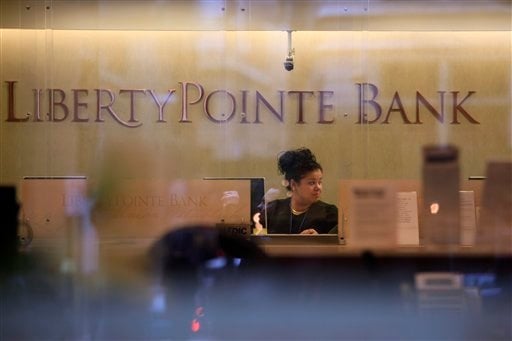The FDIC seized another four banks late last week, bringing the year's tally to 41. And there's plenty more where that came from
Regulators on Friday shut down two Georgia banks and one each in Florida and Arizona, bringing to 41 the number of bank failures in the U.S. so far this year following the 140 that fell in 2009 to mounting loan defaults and the recession.
The Federal Deposit Insurance Corp. on Friday took over the banks: McIntosh Commercial Bank, based in Carrollton, Ga.; Unity National Bank of Cartersville, Ga.; Key West Bank of Key West, Fla., and Desert Hills Bank, based in Phoenix.
The four failures are expected to cost the federal deposit insurance fund a total of around $320.3 million.
CharterBank, based in West Point, Ga., agreed to assume the estimated $362.9 million in assets and $343.3 million in deposits of McIntosh Commercial Bank. In addition, the FDIC and CharterBank agreed to share losses on $263.1 million of McIntosh Commercial's loans and other assets.
Bank of the Ozarks, based in Little Rock, Ark., is assuming the estimated $292.2 million in assets and $264.3 million in deposits of Unity National Bank. The FDIC and Bank of the Ozarks agreed to share losses on $206.1 million of Unity National's loans and other assets.
Another Arkansas bank, Centennial Bank of Conway, Ark., is assuming the $88 million in assets and $67.7 million in deposits of Key West Bank.
The two shuttered banks in Georgia followed three bank failures in that state last week and 25 last year, more than in any other state.
New York Community Bank, based in Westbury, N.Y., is assuming the $496.6 million in assets and $426.5 million in deposits of Desert Hills Bank. The agency and New York Community Bank agreed to share losses on $325.9 million of the failed bank's loans and other assets.
The pace of bank seizures this year is likely to accelerate in coming months, regulators have said, as losses mount on loans made for commercial property and development.
The mounting bank failures have sapped billions of dollars out of the deposit insurance fund. It fell into the red last year, hitting a $20.9 billion deficit as of Dec. 31.
The number of banks on the FDIC's confidential "problem" list jumped to 702 in the fourth quarter from 552 three months earlier, even as the industry squeezed out a small profit. Still, nearly one in every three banks reported a net loss for the latest quarter.
The 140 bank failures last year were the highest annual tally since 1992, at the height of the savings and loan crisis. They cost the insurance fund more than $30 billion. There were 25 bank failures in 2008 and just three in 2007.
The FDIC expects the cost of resolving failed banks to grow to about $100 billion over the next four years.
The agency mandated last year that banks prepay about $45 billion in premiums, for 2010 through 2012, to replenish the insurance fund.
Depositors' money — insured up to $250,000 per account — is not at risk, with the FDIC backed by the government. Apart from the fund, the FDIC has about $66 billion in cash and securities available in reserve to cover losses at failed banks.







